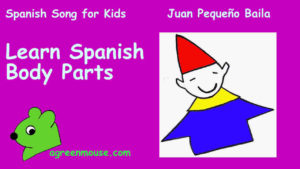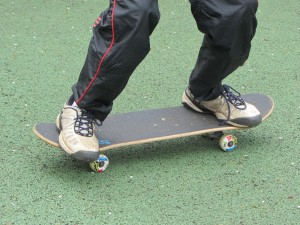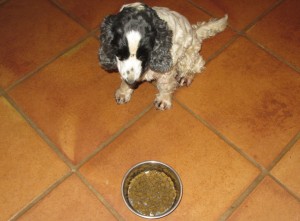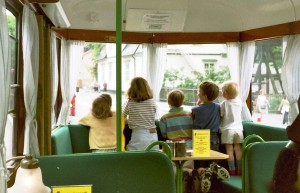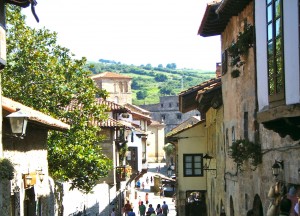Juan Pequeño Baila
Sing Parts of the Body in Spanish.
Juan Pequeño Baila = Little John Dances
Juan Pequeño Baila is a Spanish Action Song for children to join in with to learn and pronounce the names of parts of the body in Spanish.
Actions:
Point to each body part as you sing its name.
Video
Start by singing:
Juan pequeño baila,
baila, baila, baila.
Juan pequeño baila,
baila con …
Now add a body part:
… el dedo
Con el dedo, dedo, dedo,
así baila Juan pequeño.
Translation:
Little John dances,
dances, dances, dances.
Little John dances,
dances with … (the) his finger.
With his finger, finger, finger,
that’s how little John dances.
(Note: The Spanish use THE but in English ‘ownership’ of the body part is included = His/her/its finger)
Repeat the song adding a new body part to the list each time:
Juan Pequeño baila,
baila, baila, baila.
Juan Pequeño baila,
baila con …
El dedo the finger
La mano the hand
El codo the elbow
El hombro the shoulder
La cabeza the head
El culo the bottom
La rodilla the knee
El pie the foot
This is the complete rendition of the song:
Juan pequeño baila,
baila, baila, baila.
Juan pequeño baila,
baila con el dedo.
Con el dedo, dedo, dedo,
Con la mano, mano, mano,
Con el codo, codo, codo,
Con el hombro, hombro, hombro,
Con la cabeza, cabeza, cabeza,
Con el culo, culo, culo,
Con la rodilla, rodilla, rodilla,
Con el pie, pie, pie
¡Así baila Juan Pequeño!
For more about ‘The Body’ in Spanish try this:
Parts of the Body
Spanish Songs for Children:
A Green Mouse Spanish Songs

